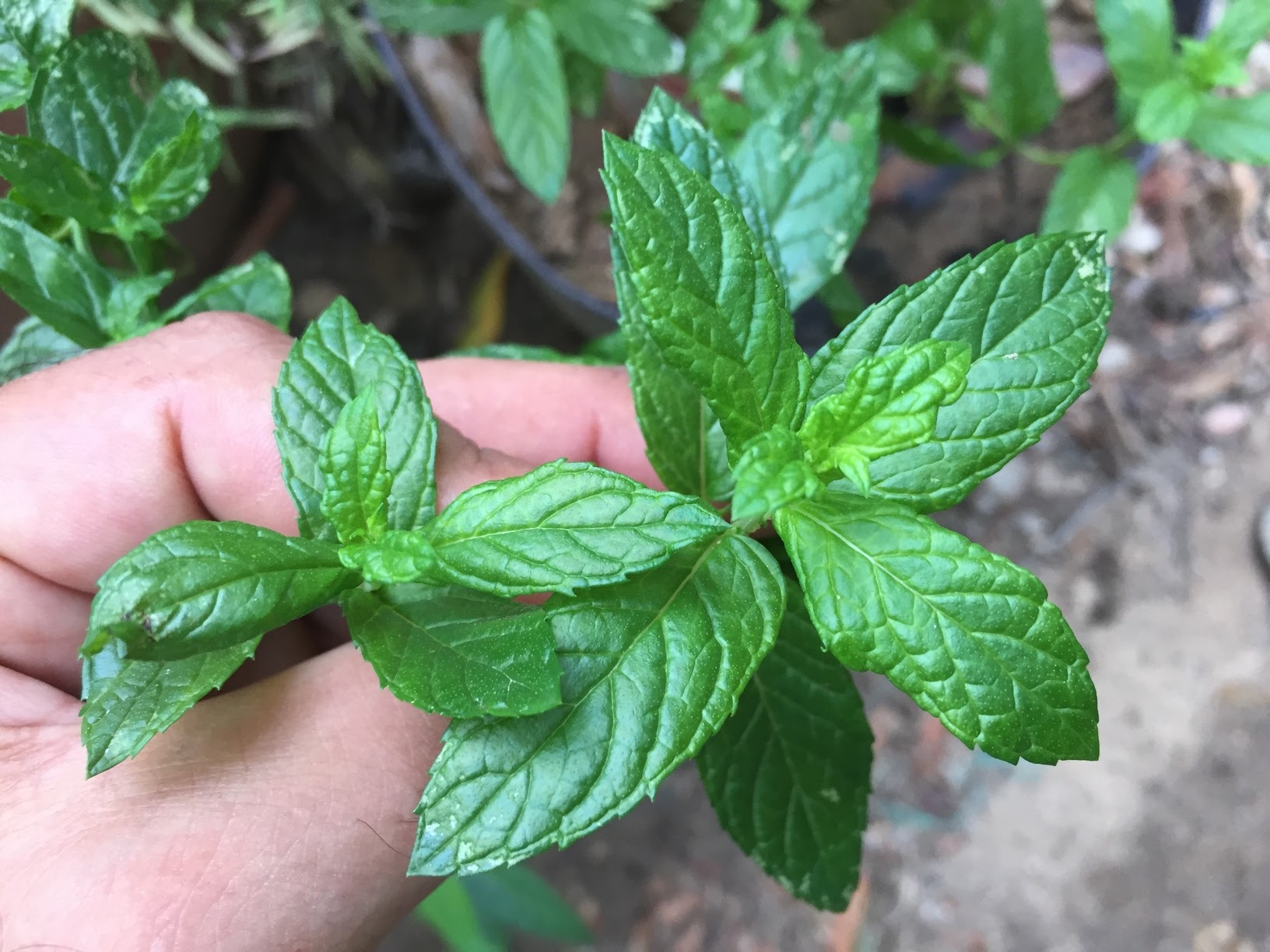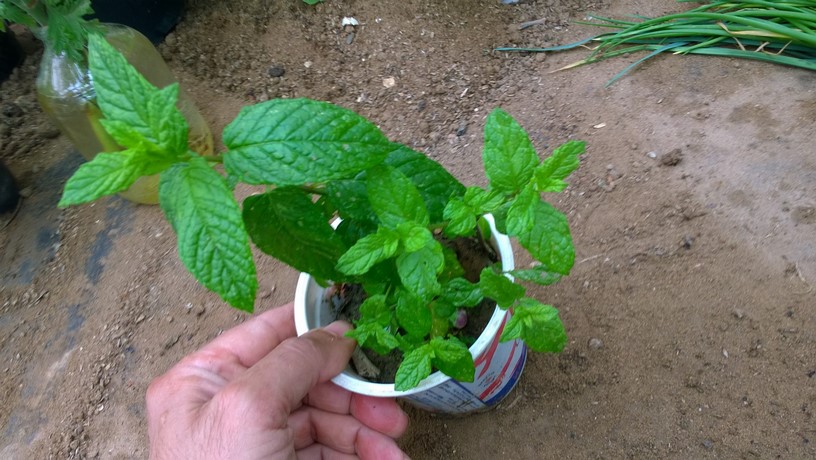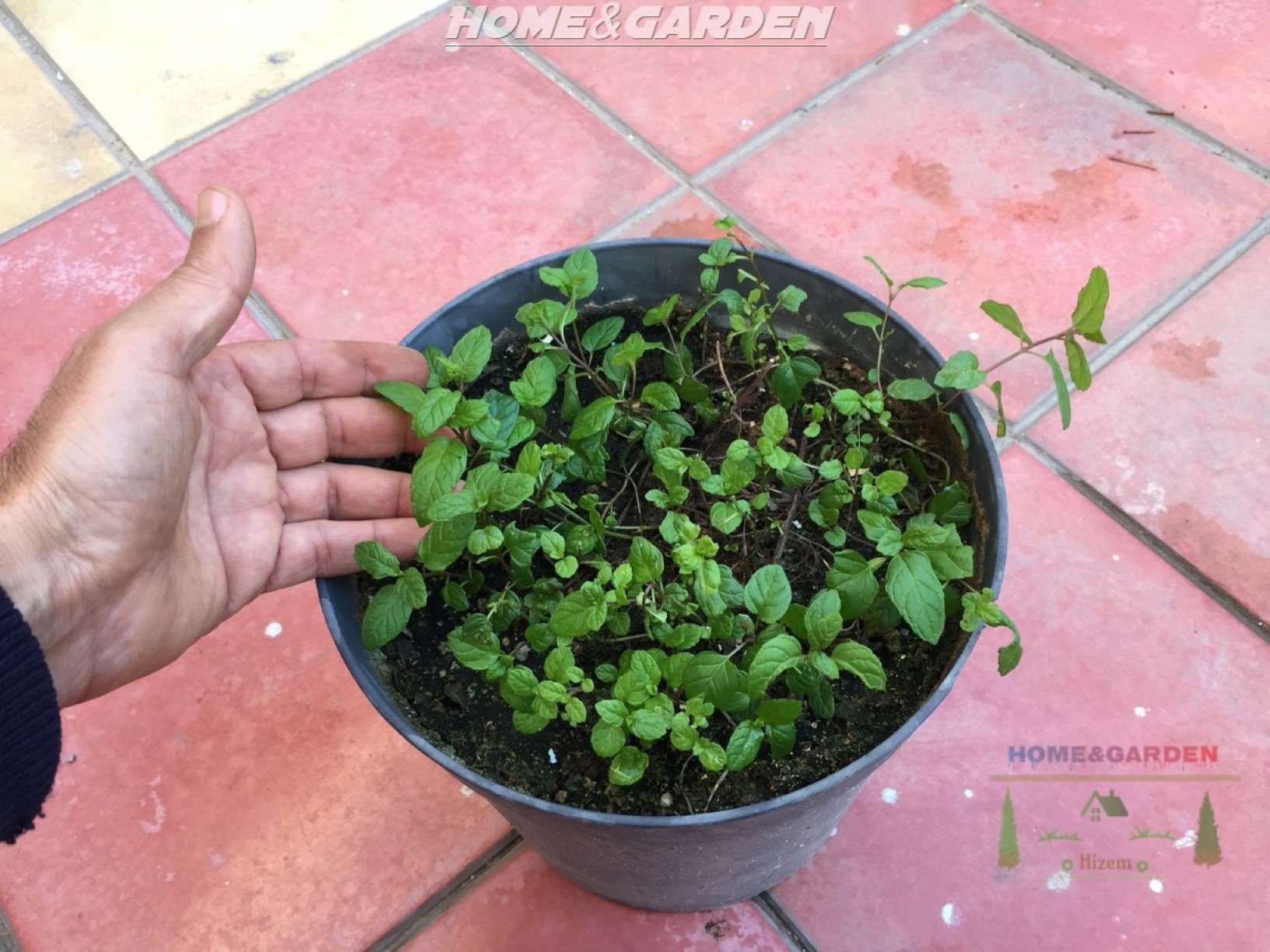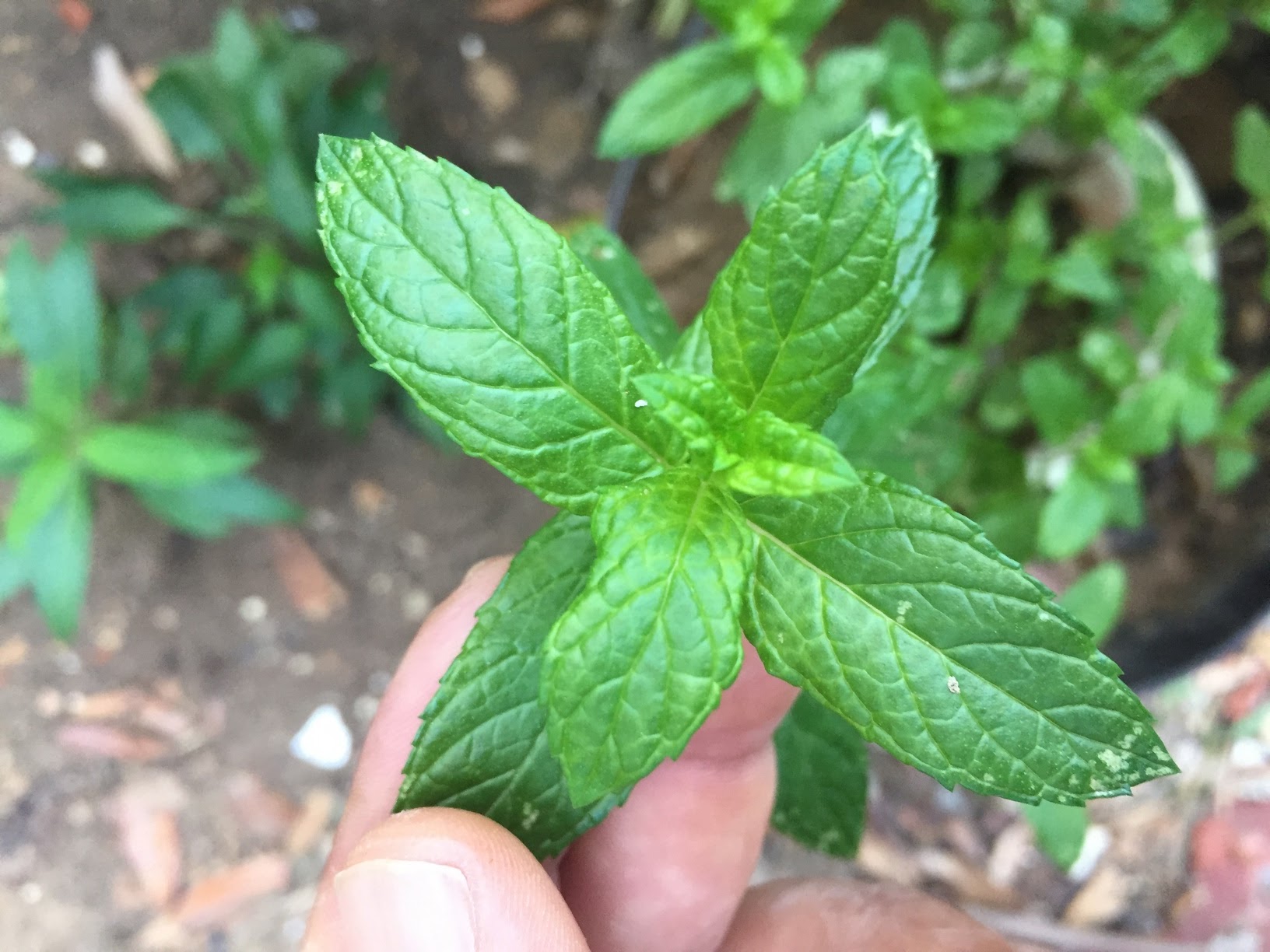Mint is a perennial herb grown for its leaves. They are wonderful infused in hot water to make a refreshing tea, chopped and added to many dishes, or used to make mint sauce. Mint comes in many different varieties, each of which is easy to maintain and lasts for many years if cared for properly. All types of mint are fast growing, spreading plants, so you must give them a place to spread without getting in the way, or plant them in a pot. Mint sends out runners that spread above and just below the ground, quickly forming large, lush green patches. Mint should be planted in sun or partial shade with high moisture. It grows vigorously, so be careful where you plant it. You can cut it frequently to keep it in control. Mint is really the perfect place to begin as you build your herb garden. It's so easy to grow .
. Planting Mint.
. Ideally, mint should be planted in the spring, or in the fall if you're in a climate that is frost free.
Ideally, they prefer a moist but well-drained site, something like their native habitat along stream banks.
. When choosing a location for your mint, find one where the plant will receive morning sun and partial afternoon shade.
. If planting your mint in a garden bed, apply mulch to help keep it from spreading.. Choose a site in full sun to part shade. Since plants can be invasive, you can grow your mint in containers to control it.
. Planting Mint In Containers .
It is best to buy mint as young plants in spring.
. Mint will spread all over the place if planted straight into the ground. This is why it is a good idea to plant it in a large pot filled with organic compost that can be placed in your favorite place to make picking easy.
. If planting your mint indoors, locate your container where it will receive good morning light but where it will also be away from drying heating elements.
. For indoor plants, be sure to water them regularly to keep the soil evenly moist.
. Be careful to keep your mint container from flopping over and touching the ground. Their Stems will root quickly if given the chance.
. Be careful to keep your mint container from flopping over and touching the ground. Their Stems will root quickly if given the chance.
. Don't worry about fertilizing your mints. This herbs adapt just fine to almost any kind of soil!
. MINT VARIETIES .
There are many different varieties of mint to choose from with leaves that smell completely different. Not all are good for culinary use, so take your time and choose what you grow carefully!
. Mint Apple Herb Plants
This mint is a tall and vigorous growing variety with large round hairy leaves and mauve flowers in Summer.You can Plant in a moist, well drained soil in full sun or partial shade. The leaves can be used for mint sauce, jelly, fruit salads and drinks whilst the stems are popular in flower arrangements.
. Mint Atlas Mountains Herb Plants
This mint is a hardy perennial with grey green, hairy foliage and mauve flowers from Summer to Autumn. Plant in a well drained but poor soil. The leaves can be used in salads, chutneys and cooked foods.
. Mint Banana Herb Plants
This mint is a vigorous spreading plant which bears small leaves that have a scent of bananas and mauve flowers in Summer that are attractive to butterflies and bees.It is ideal for flavouring fruit salads and drinks, plant it in moist, well drained soil in full sun or partial shade.
. Mint Basil Herb Plants
This mint is a hardy perennial and has oval, shiny, dark green/purple leaves with a unique scent of peppermint and basil. It has mauve flowers from Summer to Autumn and is suitable for a moist, well drained site in full sun or partial shade.You can use in salads, with fish or chicken dishes or to relieve indigestion and chest infections.
. Mint Berries and Cream Herb Plants
This mint combines the smell of mint with a hint of red berries. It has dark green leaves and lilac flowers in Summer.You can use as a flavouring in food and drinks. Plant in a moist soil of any type in sun or partial shade.
. My Tips .
. If you don't want your mint plants spreading throughout the garden, it is best to plant mint in containers and keep them under control. because they will root and spread wherever they touch the ground.
. If you’re growing several different types of mint, plant them in different containers and keep them away from each other, as they can lose their individual scent and flavour.. Harvesting Mint Leaves.
You can start harvesting mint leaves once the plants have multiple stems that are about 6 to 8 inches long. Never more than one-third of the plant at any time, to prevent weakening the plants and sending it into decline.
Mint can be harvested as soon as it comes up in spring, as young leaves have more flavor than old ones and frequent harvesting is the key for keeping mint plants at their best growth. Snip sprigs and leaves as needed. This will encourage them to send out fresh new foliage again. To extend the harvesting season, pinch off the flowering buds as they appear.
. Preserving Mint Leaves .
It is best to use fresh mint leaves, but you can preserve some leaves for using over winter. just Pick shoots, wash well, shake dry then chop into small pieces and add to an ice cube mould. Fill with water and freeze. Whenever you need some mint for a recipe, simply knock out as many ice cube as you need and add to the pan.
. Mint Plant Care .
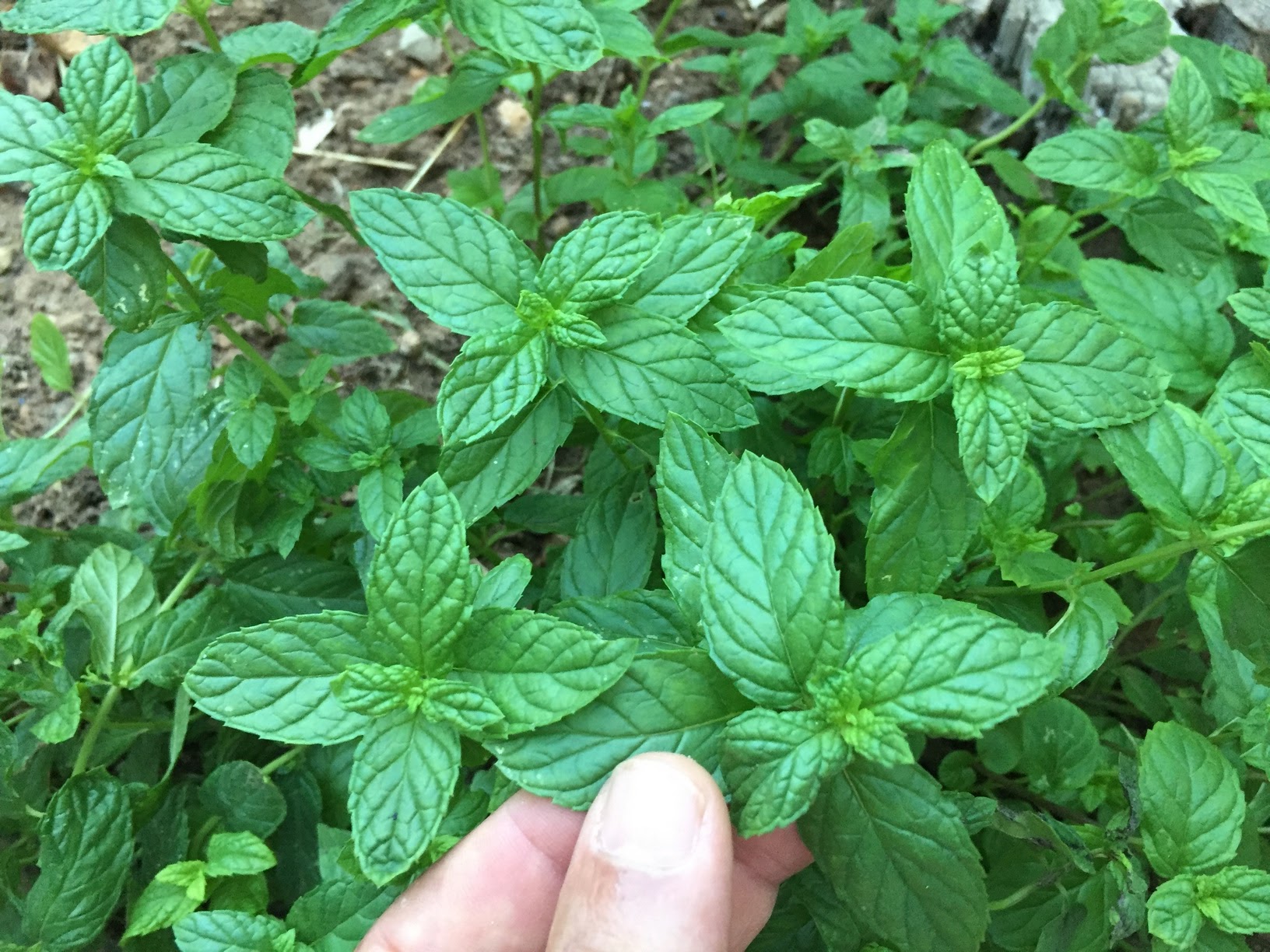
. Make sure the soil is fertile and drains well. Mint plants love moisture, but if soil drainage is not adequate, the roots will suffocate and the plants will die. Amending soils with perlite or sand can increase aeration and keep mint roots from becoming waterlogged.
. Mint plants will also benefit from soil that has been mixed with aged compost, such chicken manure. While mint plants are generally not heavy feeders, the addition of organic compost will boost nutrition levels and allow mint to feed well. Composted organic matter also increases water retention, Just be careful not to add too much organic matter, or you could risk mint rust and lose it.
. Give mint plants plenty of water when growing, especially those growing in containers and particularly during hot, dry weather.
. Lift and divide your mint plants every few years to keep them young and producing the best quality leaves that you will enjoy harvesting and making mint tea.
. Pick regularly your mint plants to keep them compact and producing lots of new growth.
. Prune off the dried branches regularly to keep the plant in shape.
. Problems of Mint .
Inspect your mint plants for any signs of stress or disease. If the plant is showing any orange-brown speckles on the lower foliage, the plant should be avoided. Such speckles are the signs of mint rust, a disease in which the plants need to be destroyed or burned. Stressed plants may also be bothered by white fly, spider mites, aphids, and mealybugs. With the proper care, all of these mint problems can be controlled. You can use an organic fungicide and try to allow plants to dry between watering!
Mint is cultivated worldwide as an important culinary herb. Humans have been using herbs for culinary & health benefits for as long as history has been recorded. Today, mint is appreciated for much more than its distinct flavor and aroma. It’s recognized for its medicinal properties, extensive nutrient profile and powerful effects on health. That's why mint earns a spot as one of the top healing herbs and spices!
Watch My Video " The Health Benefits of Mint"
Big collection of mint plants and seeds from Here!
I hope this post has inspired you and given you some reasons to grow mint!
This website is a participant in the Amazon Services LLC Associates Program, an affiliate advertising program designed to provide a means for sites to earn advertising fees by advertising and linking to Amazon. Some of the links to products on this site are affiliate links. These are products that I've used or recommend based from homesteading experience. I do make a small commission (at no extra cost to you) from these sales.(alert-warning)



